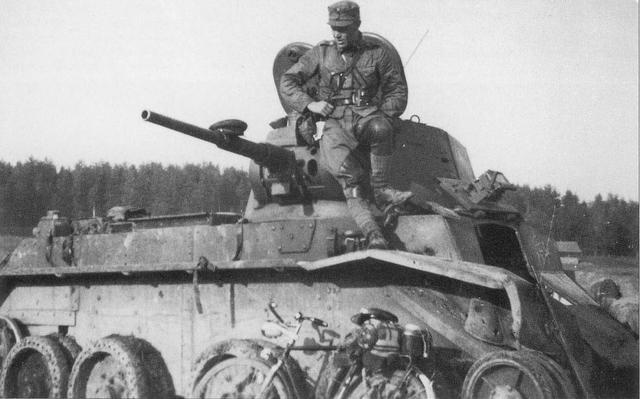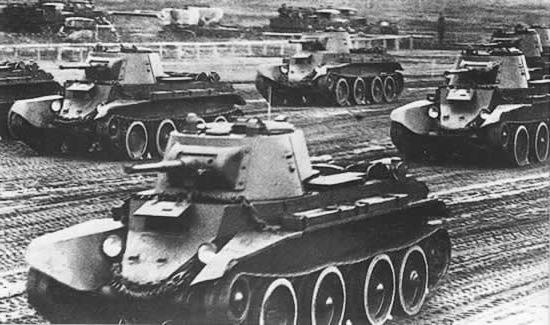“And our tanks are fast ...” This line of the famous song from the movie “Tractors”, popular in the thirties, perfectly expresses the essence of the Soviet military doctrine of the pre-war years. Not powerful and not impenetrable, speed comes first.
BT series tanks in their very name contain information about the main advantage of this equipment. The letter "B" means "fast", and for good reason. 62, and especially 86 kilometers per hour - a good indicator even for armored vehicles of the XXI century, and in the first third of XX it seemed fantastic. The BT-7 tank is the fastest tank of its time, it is a fact. It remains only to understand why it was created, to find out how it happened, and to find out why our fellow citizens know so little about this masterpiece.
The main structural elements that allow you to develop high speed in any machine is the chassis and engine. Of course, weight is also important, in relation to the tank - the mass of armor. But the task of the engineer is to find the optimal ratio of these parameters in order to complete the technical task as fully as possible. The fastest tank in the world was equipped with Christie's suspension, which is used today by the creators of armored vehicles around the world, at the same time, in the early thirties, only Soviet engineers could appreciate its simple genius. Moreover, it took Western designers at least two decades to come to this decision.

The first in the lineup was the BT-2, a wheeled and tracked tank. At its core, he already possessed all the signs of a modern aggressive machine, capable of overcoming long distances in a short time, rushing into breakthroughs, encompassing enemy military formations and cities. A design feature is its ability to move both on tracked and wheeled, that is, a combination of speed and throughput. Based on this specific feature, we can conclude about the purpose of the car: in Soviet territory, which was always distinguished by difficult road terrain, the fastest tank had to move on tracks, and when crossing the border, it only remained for them to drop them, as an extra burden, and rush further along tracks and autobahns. The engine was carbureted, which allowed the use of gasoline captured during the offensive. BT-2 became an experimental one, made in 1933, when Hitler’s aggressive plans were just beginning to ripen in his inflamed brain. Already in 1934, new BT-5 cars were already leaving the Soviet conveyors. The armament consisted of a 45 mm cannon and a machine gun.

1935 was the date of birth of BT-7. None of the countries of the world possessed anything similar at that time, it was the fastest tank, but in other indicators it became the best. Caliber turret guns - 45 or 76 mm (depending on version), frontal inclined armoring 22 mm, diesel engine V 2, 400 hp Crew - “three tankmen, three cheerful friends”.
The fastest tank took battle “baptism” in Mongolia, when a brilliant offensive operation was carried out to defeat the Japanese troops. At that time, the “European orientation” of this car also affected, the narrow tracks crawled in the sand, and there was no question of wheeled movement. The same shortcomings appeared during the Finnish campaign, but for some reason they were not in a hurry to change the design.
The reason why the fastest tank did not show itself during the years of World War II is still the same. BT was created for the European theater of operations, and its capabilities and advantages in off-road conditions remained unrealized.
The high-speed tanks produced were many, more than 5 thousand. Those that were saved after the catastrophic start of the war found their application in 1945, during a rapid offensive operation, as a result of which the Kwantung group of 1 million 400 thousand Japanese soldiers and officers was destroyed. Soviet losses amounted to about 12,000 people.